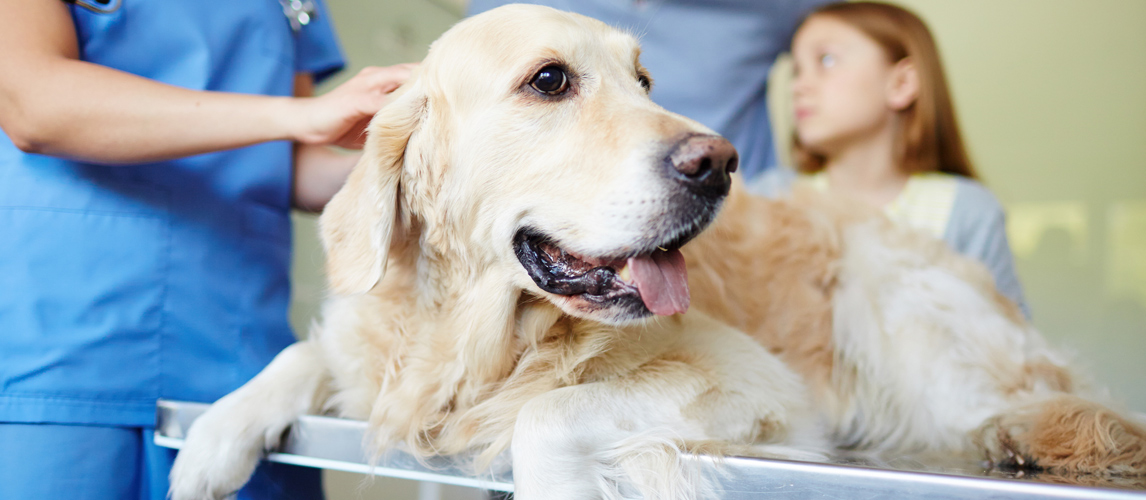If you’ve ever suffered from allergies, you know that they can be irritating and occasionally scary. From mild rashes to difficulty breathing, the symptoms of an allergy can really ruin your day. Unfortunately, your dog might also be struggling with allergies. Dogs can also have various food, pollen, and dust allergies. If you are worried about your dog having an allergy, what can you do to narrow down what it might be, and how accurate are these tests?
What Can Your Dog Be Allergic to?
Just like humans, dogs can be allergic to many things from fleas to fruit. There are three key causes of dog allergies: food allergies, skin allergies and anaphylactic shock.
- Skin allergies
Often called ‘allergic dermatitis’, skin allergies are the most common form of allergy for dogs. They are caused by fleas, food, and the environment. A notable issue with skin allergies is that it can result in secondary infection. Wounds on the skin caused by scratching are vulnerable to bacteria.
Look out for red or inflamed skin, or signs your dog is feeling itchy, such as seeing them rub themselves against furniture. Look at their ears and paws as they are most commonly affected. Allergies of this type are often seasonal, and this might help you to narrow down what is causing the problem.
- Food allergies:
There is a difference between a food allergy and intolerance, although both can be uncomfortable for your dog. A food intolerance, or sensitivity, is only a gastrointestinal reaction to food, while a genuine food allergy means your body views the food as an aggressor and so uses your immune system to attack it.
Food allergies and sensitivities can cause issues from hives to vomiting, and even anaphylaxis, and can both be resolved by finding the offending food and removing it from their diet.
Related Post: Best Dog Food for Allergies
- Acute Allergies:
Acute allergies are the scariest of all the allergies, and may be caused by some vaccines, drugs and bee strings. They can be scary because they result in anaphylactic shock, as well as less serious issues like hives and facial swelling. Anaphylaxis is a reaction in which someone gets light-headed and has difficulty breathing, and may even lose consciousness. If left untreated, it can be fatal.
The good news is that anaphylaxis is extremely rare in dogs, much more rare than in humans. It is always worth keeping an eye on your dog after new medicine, but it is statistically unlikely that your dog will suffer from this.

Common Misconceptions About Dog Allergies And Tests
- All tests are the same.
Unfortunately, this is not true. There are many tests around that advertise an ability to discover your dog’s allergies, but many are based on unproven science. Do your research for any dog allergy testing kit you are considering. Most notably, hair and saliva testing remains unproven, and the American College of Veterinary Dermatology does not recommend it.
- Tests can tell you what your dog is allergic to
This is, obviously, not entirely untrue, but is based on a misunderstanding of how the majority of tests work. They don’t show you what your dog is definitively allergic to, but they show you whether a potential allergen is still in their system. A positive reaction is not a diagnosis. It just provides more data for you to confirm your suspicions. If a blood test proves your dog still has beef in their system, even though you haven’t given it to them in a long time, the beef could be the explanation. If the test proves there is no beef in their system, it definitely isn’t.
- Animals and humans have similar allergy experiences
Dogs and humans can have different allergens that trigger allergic reactions, and their symptoms can also vary. Anaphylaxis, for example, is much rarer in dogs, which is why vets do not often bother testing for drug allergies. There are similarities, of course, but don’t use your own experience to diagnose your pet. Go to a vet.
What Should You Do If You’re Worried About Your Dog?
If testing for allergies is not always accurate and does not tell you a certain result for whether your dog is allergic to any given allergen, what is the best procedure if you are concerned about your dog’s comfort and health?
- Investigate
As there are so many possible causes of an allergic reaction, first you have to narrow down the possible sources. You do this by keeping a close eye on the symptoms. You might end up with more than one contender. This is fine, it is better not to rule out anything at this stage, you don’t want to miss something after all!
We advise that you start a diary or a notebook where you record all their symptoms and when they occur. Do they occur in summer? After walking a certain route through your local woods, where there might be a specific flower? Or is it caused by dusty, indoor areas?
- Talk to a Vet
It is a good idea to consult a vet during this process. If you aren’t sure it is an allergic reaction, you will want to visit a vet to rule out other serious health concerns. Many symptoms, such as itchiness or inflammation, could actually be symptoms of an infection or worse. When you go to your vet, you should be prepared to answer a lot of questions about when and where the symptoms have arisen, if they have improved, or become worse, and about your dog’s general habits and life changes.
Even if you manage to ascertain a potential cause of the reaction using the method below, you may want to visit a vet to discuss if there are any treatments that can help, or if it would be helpful to have an allergy test. If the likely culprit is in their food, your vet can also give you advice about changing your dogs diet, either to find the culprit or to switch to hypoallergenic food.
- Trial and Error
Once you have your suspicions, try removing the potential causes one by one to see if their condition improves. You might do this through a hypoallergenic diet that your vet has prescribed to your dog. This will remove all potential food allergens from their diet at once, which will help you to confirm if your dog is suffering from a food allergy.
Naturally, you will know what has caused the allergic reaction when the skin, gastrointestinal or other symptoms stop as a result of you removing something from their diet or life. Ideally, this would solve the problem, and as long as you continue to avoid the food, plant, or allergen that caused their symptoms, your dog will be fine.
- Consider Allergy Testing
If you are struggling to figure out what your dog is allergic to, or you want confirmation, you should consider allergy testing. Remember that testing does not tell you exactly what your dog is allergic to, but can tell you whether they test positively for the presence of substances that could be causing a problem.
For example, if you can’t tell if your dog is allergic to beef or fish, an allergy test might help you by showing you that there is no beef in their system, and therefore any symptoms they are having must be the result of an allergy or intolerance for fish. Allergy tests are not a magic solution, but they can help you paint a bigger picture in your investigation.
What Tests Can You Do?
There is no right way to investigate a potential allergy in your dog, and if you want to do an allergy test immediately, it can be a great way to narrow down what may be causing your dog’s problems, saving you time and effort. But, it is important for you to understand how these tests work, and if there is a dog allergy testing cost, before you make your decision. There are two main tests that you can ask your vet to do: blood tests, and skin tests.
Before either test there should be a thorough examination of your dog for fleas, mites, infection, and hyperthyroidism. Your vet might also put your dog on a hypoallergenic diet for up to three months as a means of dog food allergy testing if they want to rule out food as the cause. This is because both methods of testing is not hugely accurate for identifying food allergens. If your dog’s symptoms leave after this temporary diet change, you can either choose to continue with the diet, which may be expensive, or you can start a careful trial and error investigation to find the offending ingredient.
Blood Tests
It is most likely that your vet will recommend a blood test after their examination and investigation as it is the most common form of test because it is fairly easy to undertake. Your dog provides a blood sample, which is then analyzed. The technician doing the test, which may be your vet, will look the presence of any of the potential allergens that may be causing your dog’s symptoms.
Unfortunately, your vet cannot test for every allergen known to man as there are thousands and thousands of possibilities. They will, however, know the local pollen, dusts and molds, and will pursue any allergens that are of particular note in your dog’s lifestyle. Some notable aspects of blood tests include:
- They are less invasive than skin allergy tests
- They are faster, and more convenient
- While they are most effective for atropic allergens, such as mold, dust and pollen, it is potentially possible to test for some other allergens, should it be warranted.
- They usually cost between $200-300
- They will tell you which allergens your dog has in their system, but will not definitively confirm which allergen is causing your dog’s symptoms.
Skin Tests
Skin tests are the only test that could clearly indicate a cause-and-effect relationship between an allergen and your dog’s symptoms. Your dog is sedated and a small area of their fur is shaved. They are then injected with small amounts of each potential allergen, and if any of the areas where they have been injected react, it can be assumed that you have found your allergen. It is worth noting that you may just find one allergen that affects your dog, so if their symptoms persist, you may want to consider that they are additionally allergic to something else. The most important aspects of skin tests include:
- Skin tests involve sedation
- They can only really help to diagnose atopy, which are allergies caused by mold, dust and pollen. Food allergies and most flea bite allergies are not usually diagnosed using skin tests.
- They have an accuracy rate of up to 75%
- They cost around $200, but will also require additional costs, such as sedation, which costs between $45 to $100
- They could confirm which allergen is causing a reaction in your dog, but are known to be inaccurate if your dog has had recent antihistamine or steroid treatment
Related Post: Best Air Purifiers for Pets

So Should I Use an Allergy Test?
There are advantages and disadvantages to using allergy tests. Advantages include:
- They can help you narrow down what may be causing your dog’s reaction
- It can be faster than trial and error, which can be particularly important if your dog is facing anaphylaxis
Disadvantages include:
- It costs money
- It doesn’t necessarily give you a definitely answer, particularly when it comes to food allergens
You must make this decision for yourself, perhaps with the advice of your vet, but, as long as your dog isn’t in too much pain or discomfort, we suggest trying to investigate yourself first-of-all, with the help of a vet. You might even be able to avoid doing a costly allergy test at all! Obviously, if your dog is fatally allergic to something, it is worth every penny to find out what that is as soon as possible.
You might also not have the time and resources to investigate your dog’s potential allergens – it is not always as easy as it sounds! Switching to hypoallergenic food can cost as much from $15 to $50 per can, and controlling exactly what your dog eats and does is very tricky. If you find yourself struggling to investigate accurately, taking allergy tests can be a useful way to push you in the right direction.
Sources:
- Jennifer Coates, DVM, Does Your Pet Have Drug Allergies? New Test Available, Pet MD
- Sandy Eckstein, Caring for a Dog with Food Allergies, Web MD






